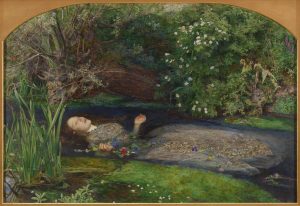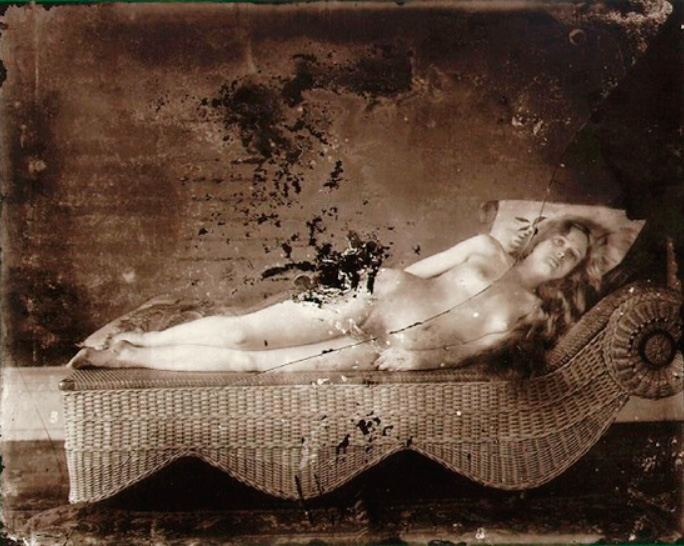Tennessee Williams’ A Streetcar Named Desire is a classic American play that is full of sex, violence, and symbolism. The first instance of symbolism, or foreshadowing in this case, that I noticed in the play was in scene one, on page 6, when Blanche first arrives at her sister’s home:
“They told me to take a street-car named Desire, and then transfer to one called Cemeteries and ride six blocks and get off at—Elysian Fields,” (6).
During my first reading of the play, I wasn’t sure if Elysian Fields was a real place in New Orleans – I immediately thought of the Elysian Fields of Greek mythology, a separate part of the Underworld where only the greatest heroes go when they die – and I thought that if it wasn’t a real place, then surely the author used that name intentionally. But when I googled it, I found that there is an Elysian Fields there, so I did not think much of it until I’d finished the play, and knew what happened to Blanche. When I read that scene again, I noticed that she’d transferred, first from the street-car named Desire, then to the one called Cemeteries, and finally to the Elysian Fields, which in the end was her final resting place, in a sense. This gave me the impression that Williams might have taken pity on Blanche’s character, and saw the childlike innocence in her, despite the ways in which she lied to and manipulated people.
I also noticed symbolism in several of the most significant motifs of the play, including light, music, and the comparisons of Blanche and Stanley to animals. The use of light and dark in this play was something that immediately grasped my attention, from the first scene of Blanche, when she walks around the corner to find Stella’s address. She is described as having a “delicate beauty [that] must avoid a strong light. There is something about her uncertain manner, as well as her white clothes, that suggests a moth,” (5). Given the context, I took this to mean that something about Blanche either already was, or would become, dark or unpure. I also found it interesting that Williams chose the word moth, given that moths are attracted to light and Blanche vehemently avoids it. In her first scene with Stella, she says:
“Now, then, let me look at you. But don’t you look at me, Stella, no, no, no, not till later, not till I’ve bathed and rested! And turn that over-light off! Turn that off,” (11).
There are many instances similar to this one over the course of the play, but one of the most significant is when Mitch confronts Blanche about his never having seen her in the light. In this conversation, she reveals that she doesn’t “want realism. I want magic,” (145). The light represents reality, which Blanche seeks to never face, instead living in her own illusions: in scene two, she tells Stanley, “All right. Cards on the table. That suits me. I know I fib a good deal. After all, a woman’s charm is fifty percent illusion, but when a thing is important I tell the truth…” (41). I also found it interesting that in the implied rape scene between Stanley and Blanche, that when he advances towards her she notices the shadows he casts on the walls. Though it seems odd, Stanley represents light in a way that is not common; he is not good or kind, and he represents Blanche’s downfall, but he also represents that which she seeks to hide, and it seemed significant to me that as he closes in on her, the shadows, or her protection in a way, was just out of reach.
Music also played a significant role in the play. The blue piano is heard several times throughout, but most often when Blanche discusses the deaths that have followed her or her loneliness. In the first scene, when Blanche reveals to Stella that they have lost Belle Reve, the blue piano grows louder. It plays again at the beginning of scene two and grows louder as Blanche talks to Stanley about the loss of the girls’ childhood home. And again, in scene four, when Stanley returns from working on the car and Blanche has just finished telling Stella that her husband is an ape. As soon as Stanley, who heard the conversation, walks in and calls for his wife, she runs to him and embraces him in a hug, while Stanley gives Blanche a cruel smile. The blue piano, here, seems especially significant, as it shows Blanche where her sister’s loyalty lies and leaves her truly alone in a home with a man she is afraid of.
I also found the comparison of Blanche to a moth and Stanley to an ape intriguing. The moth, as mentioned before, seeks light as Blanche seeks to hide from it, but is also born again from its cocoon, which seems to be all that Blanche wants to do when she arrives in New Orleans and attempts to hide her past from everyone around her. Blanche also compares Stanley to an ape, which are known for their primal aggression and lasciviousness, which are fitting of her sister’s husband. She also mentions him being of the jungle:
“He acts like an animal, has an animal’s habits! Eats like one, moves like one, talks like one! There’s even something—sub-human—something not quite to the stage of humanity yet! Yes, something—ape-like about him… Stanley Kowalski—survivor of the stone age! Bearing the raw meat home from the kill in the jungle,” (83).
I thought it interesting that Blanche made a point to mention that her name means “white woods,” which is quite different from the jungle, as she is from her brother-in-law. I also found Stella’s role to be important: she represents timidity and is in direct opposition, both literally and figuratively, to Stanley for most of the play. She is the constant between Stanley and Blanche and tries to maintain peace between them. She is comfortable in choosing Stanley through the course of the play until choosing him becomes, in a sense, her only option. On page 165 she says: “I couldn’t believe her story and go on living with Stanley.” She has actively chosen her husband over her sister and not thought about the repercussions of that choice until those consequences become so poignant that she feels them herself.
Overall I thought that the use of symbolism in this play added a great deal to the characters and their different situations.


